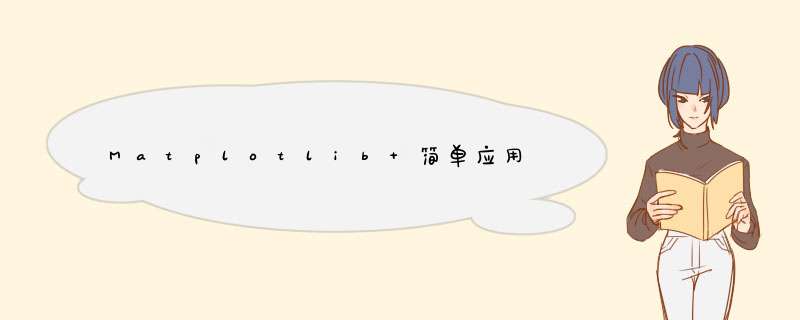
基本绘图更换风格条形图箱型图小提琴图
基本绘图import numpy as np
import pandas as pd
import matplotlib.pyplot as plt
plt.plot([1,2,3,4,5],[1,2,3,4,5],linestyle = '--',color='r',linewidth=3,marker ='o',markerfacecolor = 'y',markersize = 10,alpha =0.5)
plt.plot([1,2,3,4,5],[1,3,4,5,9],'o',color='g')
plt.plot([1,2,3,4,5],[1,4,9,16,25],'rs',color='b')
plt.xlabel('xlabel',fontsize=20)
plt.ylabel('ylabel')
xtext = 2 # 注释的X位置
ytext = 15 # 注释的y位置
plt.annotate("It's note.",xy=(xtext,ytext),xytext=(xtext-1,1.1*ytext),arrowprops = dict(facecolor = 'black',shrink = 1))
plt.grid()
plt.show()
更换风格
# 查看可用风格 print(plt.style.available)
# 使用风格
import numpy as np
import pandas as pd
import matplotlib.pyplot as plt
plt.style.use('dark_background') # 在最开始使用,否则可能不生效
plt.plot([1,2,3,4,5],[1,2,3,4,5],linestyle = '--',color='r',linewidth=3,marker ='o',markerfacecolor = 'y',markersize = 10,alpha =0.5)
plt.plot([1,2,3,4,5],[1,3,4,5,9],'o',color='g')
plt.plot([1,2,3,4,5],[1,4,9,16,25],'rs',color='b')
plt.xlabel('xlabel',fontsize=20)
plt.ylabel('ylabel')
xtext = 2 # 注释的X位置
ytext = 15 # 注释的y位置
plt.annotate("It's note.",xy=(xtext,ytext),xytext=(xtext-1,1.1*ytext),arrowprops = dict(facecolor = 'black',shrink = 1))
plt.grid()
plt.show()
手绘风格
plt.xkcd() # 画图前增加这个语句即可条形图
xdata = [1,2,3,4,5] ydata = [1,3,5,8,12] plt.bar(xdata,ydata) plt.axhline(3,color = 'r',linewidth=2,linestyle = '--') # 画一条线 plt.show()
根据要求,设置不同颜色
xdata = [1,2,3,4,5]
ydata = [1,3,5,8,12]
plot1 = plt.bar(xdata,ydata,color ='g')
for plot,height in zip(plot1,ydata):
if height <5:
plot.set(color = 'red')
plt.axhline(3,color = 'r',linewidth=2,linestyle = '--') # 画一条线
plt.show()
x =np.linspace(0,10,200) y1 = 2*x + 1 y2 = 3*x + 2 y_mean = 0.5 * x *np.cos(2.5*x)+2.5*x +1.5 plt.fill_between(x,y1,y2,color = 'red') plt.plot(x,y_mean,color = 'black') plt.show()
x1 = np.array(np.abs(np.random.randn(50))) x2 = np.array(np.abs(np.random.randn(50))) bar_labels = ['label_%s' %i for i in np.arange(50)] fig = plt.figure(figsize=(10,8)) y_pos = np.arange(len(x1)) # 这里是一个数组 y_pos = [ x for x in y_pos] # 转化成列表 plt.barh(y_pos,x1,color = 'g',alpha= 0.5) plt.barh(y_pos,-x2,color = 'b',alpha = 0.5) plt.xlim(-max(x2)-0.5,max(x1)+0.5) plt.ylim(min(y_pos)-2,max(y_pos)+2) plt.show()
np.random.seed(0)
df = pd.Dataframe({'line 1':np.random.rand(20),
'line 2':np.random.rand(20) * 0.8,
'line 3':np.random.rand(20) * 1.1})
print(df)
fig,ax = plt.subplots()
df.plot.bar(ax = ax,stacked = True)
plt.show()
箱型图
data = [np.random.normal(0,std,100) for std in range(1,5)]
print(data)
fig = plt.figure(figsize=(10,8))
box_chart = plt.boxplot(data,notch=False,sym='.',vert=True,patch_artist=True) # sym='s' 表示用方框表示,o 圆圈,.小圆圈; vert 为垂直或者水平;
plt.title('BOX Chart')
plt.xticks([y+1 for y in range(len(data))],['X1','X2','X3','X4'])
colors = ['pink','lightblue','lightgreen','blue']
for pathch ,color in zip(box_chart['boxes'],colors):
pathch.set_facecolor(color)
plt.show()
小提琴图
fig,axes = plt.subplots(nrows=1,ncols=2,figsize = (12,5))
data = [np.random.normal(0,std,100) for std in range(6,10)]
axes[0].violinplot(data,showmeans = True, showmedians =True)
axes[0].set_title('violin plot')
axes[1].boxplot(data)
axes[1].set_title('box plot')
for ax in axes:
ax.yaxis.grid(True)
ax.set_xticks([y+1 for y in range(len(data))])
plt.setp(axes,xticks =[y+1 for y in range(len(data))],xticklabels=['x1','x2','x3','x4'] )
plt.show()
直方图
import math x = np.random.normal(loc = 0.0, scale=1.0, size = 300) width = 0.5 bins = np.arange(math.floor(x.min())- width, math.ceil(x.max())+width,width) fig = plt.figure(figsize=(10,5)) ax = plt.subplot(111) plt.gcf().subplots_adjust(bottom=0.25) # 调节xlabel的位置的大小 ax.spines['top'].set_visible(False) ax.spines['right'].set_visible(False) labels = ['For Long Name' for i in range(10)] ax.set_xticklabels(labels,rotation =45,) plt.tick_params(bottom = False,top = False,left=True,right = False) # 设置刻度 # plt.grid() plt.hist(x,alpha =0.5,bins=bins) plt.show()
data1 = np.random.normal(133.35,0.13,10000) data2 = np.random.normal(133.5,0.13,10000) bins = np.arange(132,134,0.01) # print(data) plt.xlim([min(data1)-0.1*(max(data2)-min(data1)),max(data2)+0.1*(max(data2)-min(data1))]) plt.hist(data1,bins=bins,label='hist1',alpha=0.3) plt.hist(data2,bins=bins,label='hist2',alpha=0.3) plt.legend() plt.show()
Legend
fig = plt.figure()
ax = plt.subplot(111)
x = np.arange(10)
for i in range(1,5):
plt.plot(x,i*x**2,label = 'Line %s'%i)
# plt.legend(loc='center left')
plt.legend(loc='best')
ax.legend(loc='upper center',bbox_to_anchor = (0.5,1.15),ncol =4)
plt.show()
散点图
x_coords = np.round(np.random.randn(10),2)
y_coords = np.round(np.random.randn(10),2)
plt.figure(figsize=(10,8))
plt.scatter(x_coords,y_coords,marker='s',s=50)
for x,y in zip(x_coords,y_coords):
plt.annotate('(%s,%s)'%(x,y),xy=(x,y),xytext=(0,-15),textcoords = 'offset points',ha ='center')
plt.show()
欢迎分享,转载请注明来源:内存溢出

 微信扫一扫
微信扫一扫
 支付宝扫一扫
支付宝扫一扫
评论列表(0条)